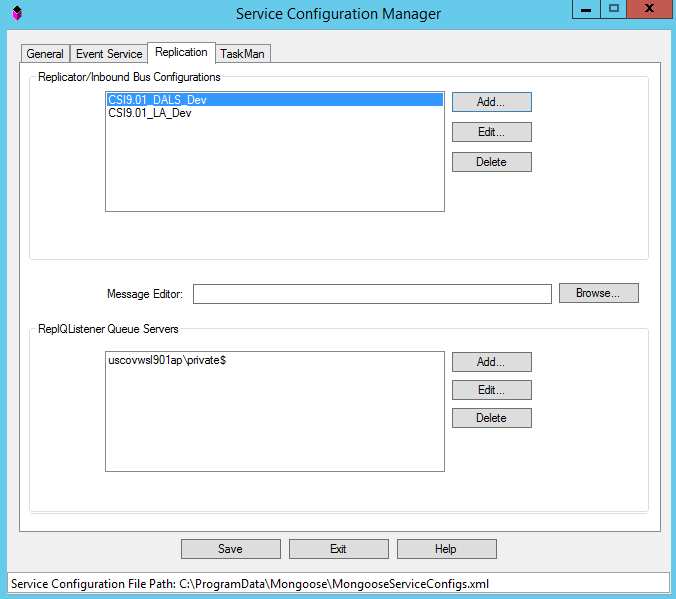Setting up replication and BOD options
On the Replication tab, configure the options used in non-transactional replication and in BOD replication.

Refer to the online help for this tab of the Service Configuration Manager for details on how to set up these fields. Be aware of this information:
- If any of the configurations defined on this utility server will be running non-transactional replication, click the button next to the Replicator/Inbound Bus Configuration field to create a list of all of the configurations that can receive inbound or outbound messages from other sites on the intranet. The Replication Document Outbox form at each site collects outbound BODs for that site. The Replication Document Inbox form at each site collects inbound BODs for that site.
See the definition of non-transactional replication in Planning.
If you are upgrading from a previous version and you already have replication set up through a "bootstrap" site, it will still work as it did in the previous version. The Replicator/Inbound Bus Configurations field contains one site set as the Master Site, and the ReplQListener Queue Servers field has the Default field selected.
- The Inbound Bus Service can be installed multiple times on the same computer, in order to run it against a particular configuration that is specified at installation. However, setting a list of configurations to monitor, as described above, is the preferred method.
- If you set up a default configuration on the General tab, the application uses that configuration as the replicator configuration if you don’t specify a different configuration here.
- Click the button next to the Replication Queue Listener Servers field to set up a queue server name for every intranet in your system.
Generally, the queue server name is set to localhost\private$ which uses the standard private message queues named inbound and outbound on the utility server. However, if you have specified a Queue Server Name on the Intranets form, that name is used to build a path. For example, utilityserver3\private$\MyQueues results in the use of the queue names MyQueues_inbound and MyQueues_outbound.
- Click to save your changes. The changes you made might not be recognized until you stop and restart the services later.